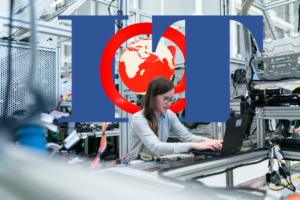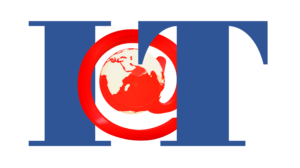If I were going to name the coming year based on what people are predicting, I would probably call 2015 the year of the Internet of Things. From private lives to commercial activities to government services, numerous prognosticators are predicting that the Internet of Things (IoT) is going to significantly change how things are connected over the next twelve months and beyond. International Data Corporation (IDC) defines the IoT as a “network of networks of uniquely identifiable end points that communicate without human interaction using IP connectivity be it locally or globally.” IDC has released its Top Ten predictions about the Internet of Things and its predictions look out as far as the next five years. [“IDC reveals global Internet of Things predictions for 2015,” M2M World News, Tech Talk (via USAT), 4 December 2014] The IDC predictions have been the focus of numerous articles so I will use them as the basis of this article as well. The first IDC prediction deals with the IoT and the Cloud.
Prediction 1: IoT and the Cloud: Within the next five years, more than 90 percent of all IoT data will be hosted on service provider platforms as cloud computing reduces the complexity of supporting IoT “Data Blending”.
Although not explicitly stated, the fact that almost all IoT data is going to be cloud-based means that businesses are going to be placing a great deal of trust in cloud service providers. That begs the question: Do service providers deserve this kind of trust? IDC analysts understand that regardless of where the data is stored hackers are going to try and get at it. That fact leads directly to IDC’s second prediction.
Prediction 2: IoT and security: Within the next two years, 90 percent of all IT networks will have an IoT-based security breach, although many will be considered “inconveniences.” Chief Information Security Officers (CISOs) will be asked to adopt new IoT policies.
If security breaches are such a certainty (and if these breaches can be addressed using new IoT policies), why should CISOs wait until a breach occurs to implement better policies? Nestor E. Arellano (@nestorarellano) writes, “The big challenge will be securing and ensuring the privacy of information shared across many smart devices, whether they’re servers, sensors or televisions and appliances.” [“10 Internet of Things predictions for 2015,” ITWorld Canada, 9 December 2014] Sansa Security believes that one of the policies that needs to be implemented is security beyond passwords. “The problem with passwords today,” the company states, “is that they are not very secure. Cloud-based password-cracking tools available now can process as many as 300 million password attempts in about 20 minutes, which means that even strong encrypted passwords can ultimately be cracked, given enough time and resources. The demise of passwords is going to give rise to other forms of authentication, such as biometric authentication. An example of this is the fingerprint reader on today’s newer iPhone models. Combining this form of authentication with a password or a gesture swipe is referred to as two-factor authentication and provides a more reliable and secure way to access and protect devices on the home network. Until two-factor authentication becomes the default setting on IoT devices, expect to continue reading stories about IoT devices getting hacked and their information leaked onto the Internet.” [“Sansa Security Reveals 2015 IoT Predictions,” Sansa Security, 9 December 2014]
Prediction 3: IoT at the edge: By 2018, 40 percent of IoT-created data will be stored, processed, analyzed, and acted upon close to, or at the edge, of the network.
When IDC refers to “the edge” of a network, it is referring to assets closest to the end user, including computers, personal digital assistants, cellphones, smartphones, tablets, and other devices that we use in our daily lives. End user items that could become widely used in the future include driverless cars, autonomous drones, appliances, and so forth. The end-user category that is predicted to explode is wearables (more on that later).
Prediction 4: IoT and network capacity: Within three years, 50 percent of IT networks will transition from having excess capacity to handle the additional IoT devices to being network constrained with nearly 10 percent of sites being overwhelmed.
This prediction should give you some idea about how much data is going to be generated as machines begin communicating with other machines over the IoT. That’s why General Electric prefers calling the IoT the Industrial Internet. Cisco, on the other hand, lumps both the World Wide Web (i.e., the human Internet) with the IoT and calls this super network the Internet of Everything.
Prediction 5: IoT and non-traditional infrastructure: By 2017, 90 percent of datacenter and enterprise systems management will rapidly adopt new business models to manage non-traditional infrastructure and BYOD device categories.
The ubiquity of personal and commercial devices that will be connected to the IoT will make managing data so onerous for most businesses that they will be happy to offload data management to firms dedicated to that function. This prediction fits nicely with IDC’s first prediction about corporations moving their data to the cloud.
Prediction 6: IoT and vertical diversification: Currently, over 50 percent of IoT activity is centered in manufacturing, transportation, smart city, and consumer applications. Within five years, all industries will have rolled out IoT initiatives.
Arellano believes this prediction is accurate because the “IoT has the potential to deliver on what CIOs from almost any industry want” — improved productivity, automated tasks, and reduced complexity. Those are also end results that governments would like to achieve, which is why IDC’s next prediction involves smart cities.
Prediction 7: IoT and the Smart City: In the effort to build innovative and sustainable smart cities, local government will represent more than 25 percent of all government external spending in order to deploy, manage, and realize the business value of the IoT by 2018.
As I’ve noted in a number of articles about smart cities, technology is not all that is required to make a city smart. It takes smart people and smart policies as well as smart technology. However, the inescapable truth is that technology is the foundation upon which a smart city emerges. The IoT will play a significant role in making cities smarter because the IoT is all about networks and there are lots of networks involved in running a city including: Energy; Water; Waste; Infrastructure; Public Safety; Education; Healthcare; Transportation; and Citizen Services.
Prediction 8: IoT and embedded systems: By 2018, 60 percent of IT solutions initially developed as proprietary, closed-industry solutions will become open-sourced, which will allow a rush of vertical-driven IoT markets to form.
Sansa Security adds, “The biggest problem with IoT devices today is that most of them cannot interoperate with IoT devices from other manufacturers. This is due to an inherent weakness in the implementation of common security protocols. This weakness also means that multiple devices from different manufacturers cannot be operated through a single user interface on a computing device. In 2015, expect this obstacle to be corrected. If we don’t see the first shipment of products that offer device interoperability and the ability to control devices through a single user interface by 2015, expect to read about product roadmaps from the major consumer electronics makers that promise to include these functions in future devices.”
Prediction 9: IoT and wearables: Within five years, 40 percent of wearables will have evolved into a viable consumer mass market alternative to smartphones.
This might be one ICD prediction that goes a bit too far. Wearables are certainly on the rise, but the ubiquity of the smartphone likely means that it will be the personal device of choice for years to come. According to Louis Columbus (@LouisColumbus), “87% of connected devices sales by 2017 will be tablets and smartphones.” [“IDC: 87% Of Connected Devices Sales By 2017 Will Be Tablets And Smartphones,” Forbes, 12 September 2013] Although I’m skeptical that wearables are about to replace mobile phones, I do agree that wearables are on the rise. Nik Badminton (@Nikolas_DCM) writes, “2015 is the year when wearables will grow up. Over the past two to three years, we have seen all kinds of wearable computing — watches, glasses, cameras, and sensors in clothes — however, the average person is still trying to work out what to do with it all. It takes a lot of effort and consideration to quantify your life and do something useful with the data.” [“2015 Predictions: The Year of Alternatives,” LinkedIn, 8 December 2014]
Prediction 10: IoT and millennials: By 2018, 16 percent of the population will be Millennials. This group will be accelerating IoT adoption due to their wealth of experience living in a connected world.
Predicting anything about Millennials can be tricky. After all, the group is normally defined as anyone who was born between 1980 and 2000. That means you could be talking about a 14-year-old or a 34-year-old. By 2018, the youngest of the group will have reached adulthood and predictions about Millennials as a group may start to become more meaningful. Nevertheless, I agree with IDC analysts that this group will probably accelerate IoT adoption because members of that generation born in developed countries are often referred to as digital natives. Even many members in developing countries have grown up using smartphone technology.
Taken in total, IDC’s predictions cover a lot of territory. They are also remarkably uncontroversial from what I’m reading. They identify technology vectors that are on the rise and those technologies are unlikely to be deflected from the course they are on, at least in the near term.




